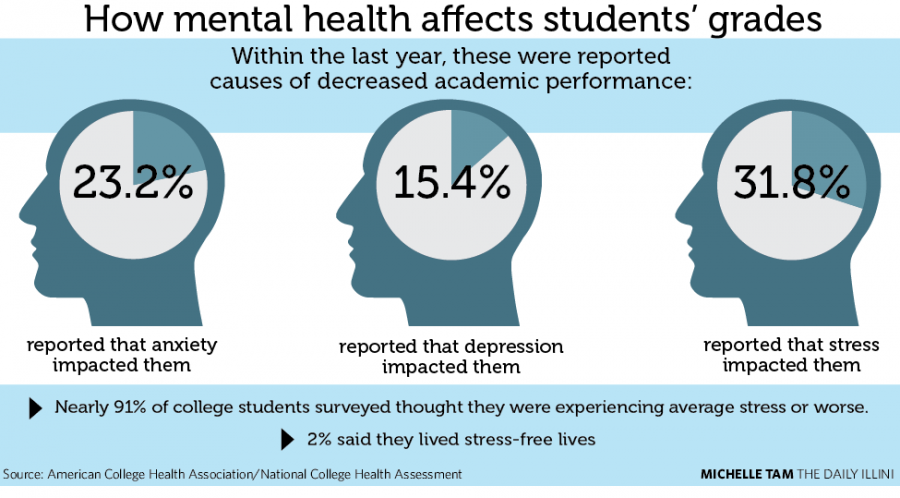New Instagram feature challenges users to consider mental health
Oct 26, 2016

Do you remember the first time you saw a headline about a man walking alone up the Golden Gate Bridge and knew what it meant?
Do you remember seeing a picture of a semicolon on a girl’s wrist sneaking out through her long sleeve shirt that was covering faded red marks, and understanding what that stood for?
The phrase, “if you see something, say something,” is commonly overheard in subway stations and airports, and it is likely that you understand the importance of this announcement. It is also likely you have been taught to notice the signs of alcohol poisoning and take measures to ensure the safety of the affected person. It is also highly probable that you have been informed how to answer when someone tells you they are a survivor of sexual assault.
But what about when there aren’t physical signs that something is out of order?
Get The Daily Illini in your inbox!
Instagram recently announced they would be taking measures to try and address this very topic. While social media is often written off as a facade of reality, there is actually a lot to be gleaned from the emoji and hashtag usage your friend posts along with their most recently filtered picture.
If you are scrolling through Instagram and see an image of a friend that causes you to think something is wrong, you can now anonymously flag the image and have it reviewed by a team of experts who can direct the user to people who can help him or her.
If an image is flagged, the poster will get a message that says, “Can we help? Someone saw one of your posts and thinks you might be going through a difficult time. If you need support, we’d like to help.” They will then be prompted to pick between talking to a friend, contacting a helpline or viewing tips and support.
In high school, I slept with my phone on my pillow waiting for the phone call from a friend who said they sometimes just wanted someone to be there when they couldn’t sleep at night. In college, I was told to observe the way the mood of the campus would change during finals week, and to be on the lookout for someone that may just need to talk at any hour.
I never had an issue keeping my phone by me at night, and I can definitely notice and observe the shadow that fills campus during exam time, but I’ve never had the words to say what was needed.
To address this issue, Instagram has partnered with networks such as the National Suicide Prevention Lifeline and the National Eating Disorders Association in addition to over 40 organizations around the world who provide support to people considering self-harm. And the timing of Instagram’s new feature is ideal given the large number of students affected by issues of mental health.
In 2015, the National College Health Assessment came out with statistics on various health and medical matters on campuses. The report found that more than 60 percent of students reported feeling “very sad” in the last year, more than 30 percent “felt so depressed that it was difficult to function,” and between 8 and 9 percent “seriously considered suicide.” (Source)
We don’t need to talk in code about mental conditions any longer. If you see something, hear something, feel something or believe something — say something. Learn about different mental conditions and how to respond accordingly. Show your friends they are not alone even if they think they are.
There’s no cure-all medicine for mental illness. No two cases are the same, and the way they are addressed must respond to the needs of the individual. It is incredibly crucial that college students be taught to not only be aware of the well-being of our peers physically, but mentally as well. And to begin to play an active role in addressing problems.
Instagram’s new feature, while not the end of the conversation, is a huge step in the right direction.
Hayley is a sophomore in ACES.
[email protected]






